This piece was originally shared with Beer Branding Trends Newsletter subscribers. Join nearly 6,000 other beer industry pros who receive the Beer Branding Trends Newsletter each month covering trends, currents and actionable advice from CODO Design.
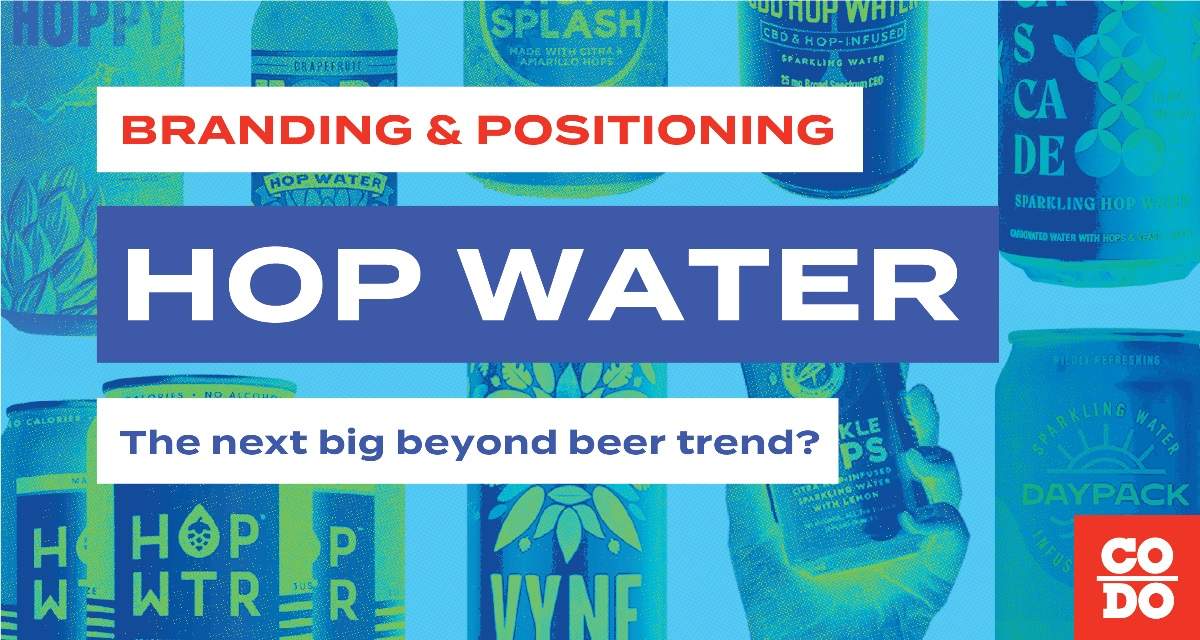
As of November 2022, Hop Water is not a trend in the you-see-it-everywhere-and-everyone-is-talking-about-it sense. Though the category has actually been around for several years (as far back as the early 2010’s from what I’ve seen), Hop Water is still relatively new as far as consumers are concerned.
Indeed, this entire category could fizzle out and get lost in the veritable sea of new product development we’re currently enjoying across the beverage industry. BUT, as hard seltzer loses steam (or at least, as the newness that drove seltzer’s wild ascendency continues to wane) and the non-alcoholic (NA) category continues to expand, I think Hop Water is in a perfect position to flourish.
There are enough on-trend and compelling value props that could make Hop Water a decently-sized category in its own right, and something that any brewery who is producing beyond beer products might want to consider.
If you’re seeing what I’m seeing, then it could be worth experimenting with this style over the winter ahead of spring/summer 2023. (Clock starts now, folks.) — This might be confirmation bias on my part (I love Hop Waters), but CODO has seen a sharp uptick in inquiries for Hop Water branding projects. Sharp uptick as in we received one inquiry in all of 2021 and nearly a dozen this year. These inquiries (two of which became fun, ongoing projects) have come from startup Hop Water brands, to smaller breweries (~1,500 bbl per year) and all the way up to regional breweries.
Another interesting point here: We’ve also seen a steady decline in the number of breweries reaching out to discuss non-alcoholic beer branding projects this year. We had a lot of movement on this front throughout 2021 and even into early 2022. But this has since quieted down almost entirely. While anecdotal, this context matters. There’s movement here, at all levels, and there are land grabs available for early movers who get it right.
Okay, preamble over. Let’s hop to it.
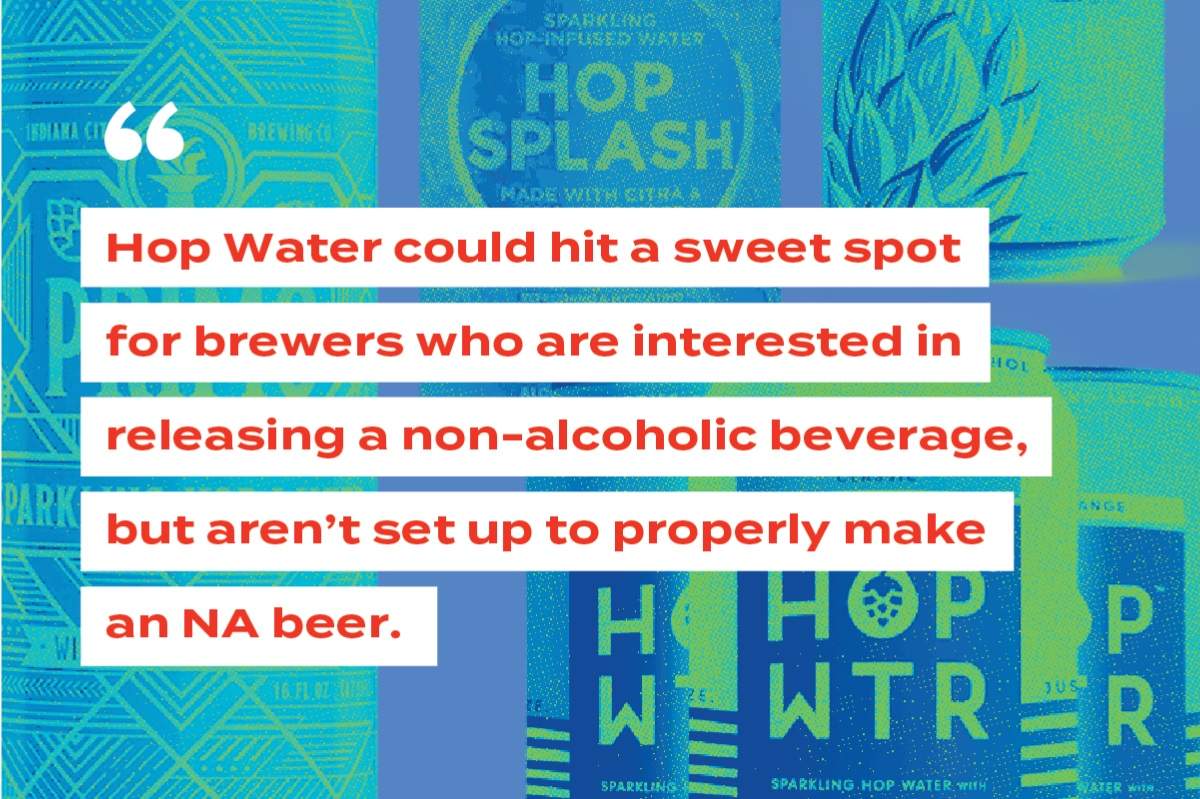
What is Hop Water?
Hop Water, in its simplest form, is just hops, water and carbonation. That’s it. There’s an infinite amount of tinkering you can do with it, but it’s a simple beverage. And it’s worth noting that most of what we’re discussing here can apply to any beer adjacent, NA hopped product, from Hop Water to Hop Tea and Soda, (coffee?), etc. I think Hop Water is the most immediately exciting product in this category, particularly as a potential foil against NA beer, but these will all likely grow over the coming years.
What trends and value props could drive Hop Water’s growth?
It’s a sparkling water (so it’s familiar)
Sparkling Water has been trending for years (see LaCroix, Polar, Topo Chico, Spindrift, Bubly, Waterloo, etc.). What this means for Hop Water is that you don’t have to work to educate your consumers on what this product is. They already have familiar drinking experience cues to pull from when being introduced to your brand, particularly in off-premise, where they will likely encounter your Hop Water for the first time. (Consumer education is an ongoing issue for the kombucha category, for example.)
It’s got nothing (which makes it better for you)
Hop Water has no alcohol, no calories, no carbs, no sugar, no sodium, no gluten, no adorable bunnies harmed during the brewing process. Nothing. This means that it’s healthy to drink, which follows a broad cultural shift towards balance, wellness and overall fitness.
Look for this to be a major point of differentiation, particularly if Hop Water starts squaring off with NA beer. And as far as what categories Hop Water could steal share from, my bet is squarely on NA beer because of the shared audience and this key differentiator.
For the brewer specifically (COGs and path to market)
1. Hop Water could hit a sweet spot for (the growing number of) brewers who are interested in releasing a non-alcoholic beverage, but aren’t set up to properly make NA beer.
2. In its base form, Hop Water can be high margin (similar to hard seltzer) and relatively easy to make (compared to NA beer). However, the COGS can increase significantly depending on what additions go into your final beverage. I reached out to a CODO partner in the flavor development and ingredients industry to discuss the costs to produce Hop Water and he gave me a thorough run down. I’m including this at the bottom of this email for anyone who is interested in exploring these products.
3. Offering options like this in your taproom are a no brainer. You can get patrons to stick around longer and increase your average ticket size. Whether they enjoy a Hop Water as a pacer in between beers, or finish their evening off with a few, you’re still banking an extra $5 – $8 (whatever you charge for it in your taproom) per pour. And a good deal of that is profit. We wrote about the myriad benefits of offering great NA options in your taproom in our 2022 Beer Branding Trends Review. Revisit that piece here.
4. Hop Water, like NA beer, is good-to-go for direct to consumer (DTC) shipping. You can mail it out to anyone in the country. Hell, you can buy Hop Waters on Amazon. This is cool because eventually, shipping beer will be made legal (or at least, easier). This is definitely a boon for larger producers, but for smaller outfits, you can still take advantage of this (or at least, put in place a DTC plan for when/if shipping beer actually becomes less onerous and more viable at your scale).
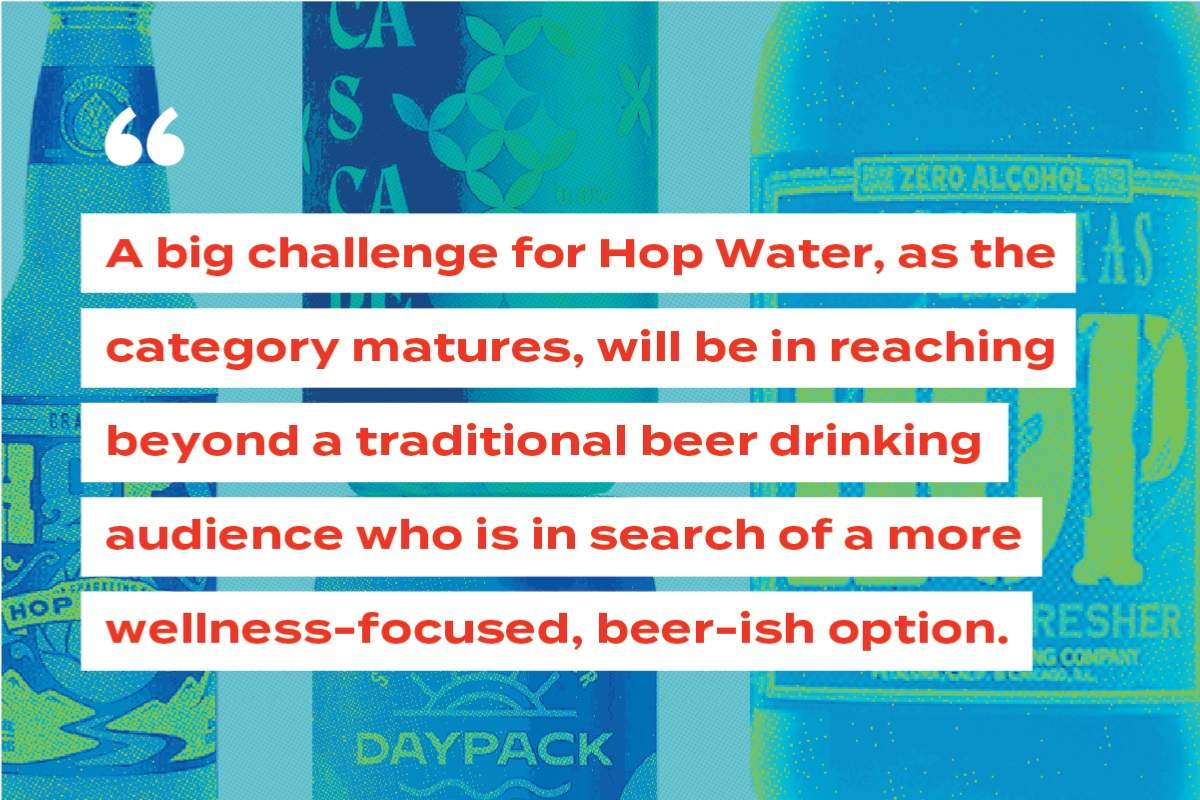
Broad (early) thoughts on branding and positioning Hop Water
Can Hop Water move beyond a beer-drinking audience? (or, does it need to?) + Opportunities for Categorical Differentiation
1. I think we’re still in Phase 1 of Hop Water (think ~2018 for hard seltzer) where consumers are still not entirely aware of it. And the breweries that are moving on this category are leaning heavily into the hop angle. This first cohort of Hop Water brands are being positioned as beer alternatives. Or, a beer alternative-alternative (an NA beer alternative). With as fast as trends move today, I see this phase lasting a bit longer before we start to see established brands and new entrants alike start to carve out other (categorical) positioning opportunities en masse.
2. I’ve outlined my doubts before about the long term runway of NA beer. (NA discussion starts around the 26 minute mark on this podcast.) As a refresher, why would a Zoomer who isn’t interested in beer, but is largely sober, reach for a non-alcoholic beer? Or in this case, a (beer-adjacent) Hop Water? In this same vein, a key challenge for Hop Water as the category matures, will be in reaching beyond a traditional beer drinking audience who is in search of a more wellness-focused beer-ish option. Though with an aging Millennial cohort (seeking more beer alternatives), and more growth across NA beverage in general, there may be plenty of runway (or at least, opportunities for incremental growth) with a traditional beer drinking audience as is.
Hop Water as a platform (or, a blank canvas)
We should think of Hop Water as a platform for experimentation. There’s the immediate angle of exploring different hops, and dry hopping and overall level of carbonation, etc.
But I think Hop Waters are a perfect chassis to accept other macro beverage trends. Consider the litany of better for you, functional ingredients, the more emergent and esoteric the better (e.g. nootropics, adaptogens, super fruits, mushrooms, electrolytes, caffeine, THC, CBD/CBN).All of these could work in a Hop Water, so long as they don’t add to the calorie or carb count. Again, having a traditional beer tasting note while being calorie and carb free (and refreshing) is the real value prop here.
—
Hop Water is also a blank canvas when it comes to visual rule set and category cues. It’s so new (and hasn’t had a rocket ship to define what is and isn’t allowed, visually, like White Claw or Truly did for the seltzer category), that there are no category norms, constraints, or visual canon yet. There are no preordained formats, colors or iconography. Nothing. This is exciting from a brand building standpoint because we can swing big and make some beautiful stuff.
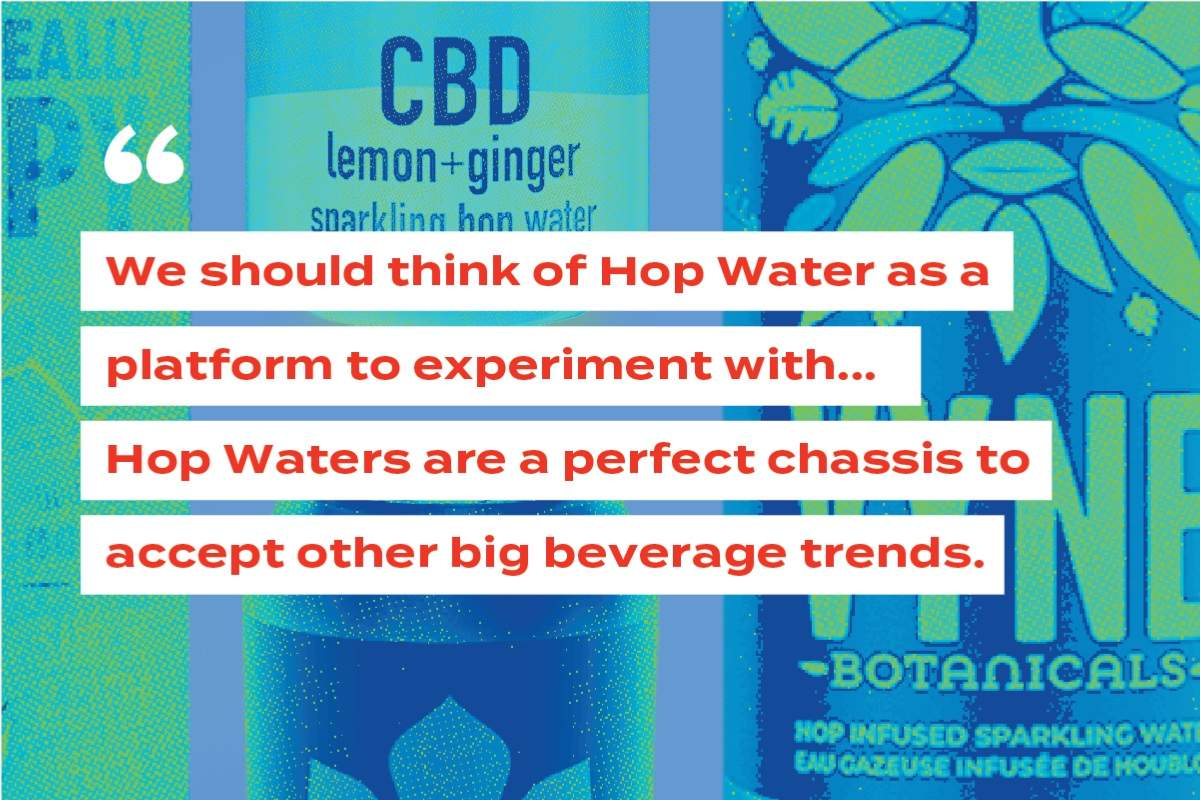
Hop Water’s category nomenclature
Similar to how Hop Water has no defined visual canon yet, there are also no rules (from a consumer standpoint) that dictate what we call these beverages on pack. We’ve seen Hop Waters (and a variety of non-alcoholic water-based beverages) called “seltzer,” “carbonated water,” “hop-infused sparkling water,” “soda water” and “sparkling water.”
If I was forced to pick one of these, I think “sparkling water” is the most approachable for the lay person. Though your broader positioning goals for this product (along with any label requirements and nutritional facts) should dictate which route you go here.
Two additional thoughts to shape your customer experience:
1. While calling a Hop Water a “seltzer” is technically correct, I think this is a mistake from a messaging standpoint. In 2022 and beyond, legal drinking age consumers will see “seltzer” and assume it’s a hard (alcoholic) seltzer.
2. As your brewery continues to expand its portfolio beyond beer, it will become increasingly important to delineate between your alcoholic and non-alcoholic products. Hop Waters are non-alcoholic and should be clearly noted as such so your customers can make an informed purchasing decision. Don’t assume people know this out of the gate (the category is still too young for that).
Think about your Brand Architecture
Hop Water could be a great beyond beer fit for many breweries because it’s so beer-centric. From a Brand Architecture standpoint, you might not have to be overly-worried about protecting your parent brand, and can likely position your Hop Water as either a straight Brand Extension or a Sub Brand.
But if you’re considering these two options in particular, think about the long term runway of this brand.– Could your Hop Water sell like crazy and carve out a large part of your portfolio? – Can you envision line extensions and even brand extensions spinning off of your Hop Water brand (into hop teas or sodas, etc.)? – Could your Hop Water steal sales away from another Low & No offering in your portfolio? If you answered yes to any of these questions, then you might want to explore more of the middle ground option (Sub / Endorsed Brands) on the Beverage Brand Architecture Continuum.
—
This Brand Architecture portion was painted with a super broad brush. Your positioning and parent brand’s reputation, as well as your competitive set and goals for your Hop Water line will all drive whether or not this is correct.
Take our Beverage Extension Assessment Tool (B.E.A.T.) to make sure your Brand Architecture approach is dialed in before making any big decisions on this front.
For more insights like this, join nearly 6,000 other subscribers who receive CODO Design’s Beer Branding Trends newsletter each month covering trends, currents and actionable advice from the front lines of beer branding.

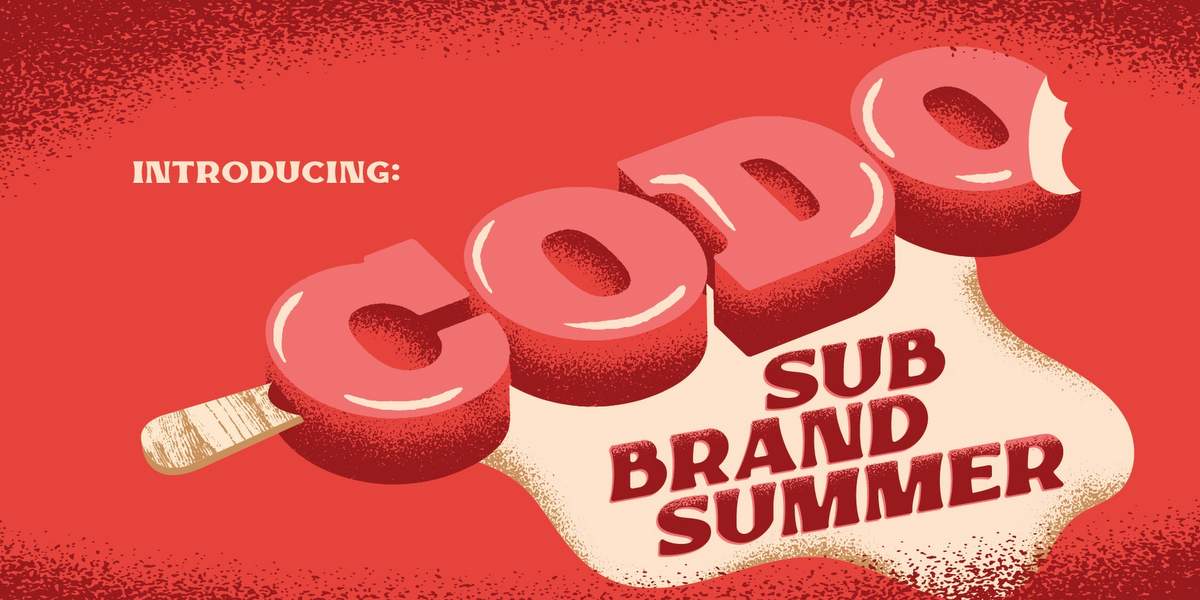
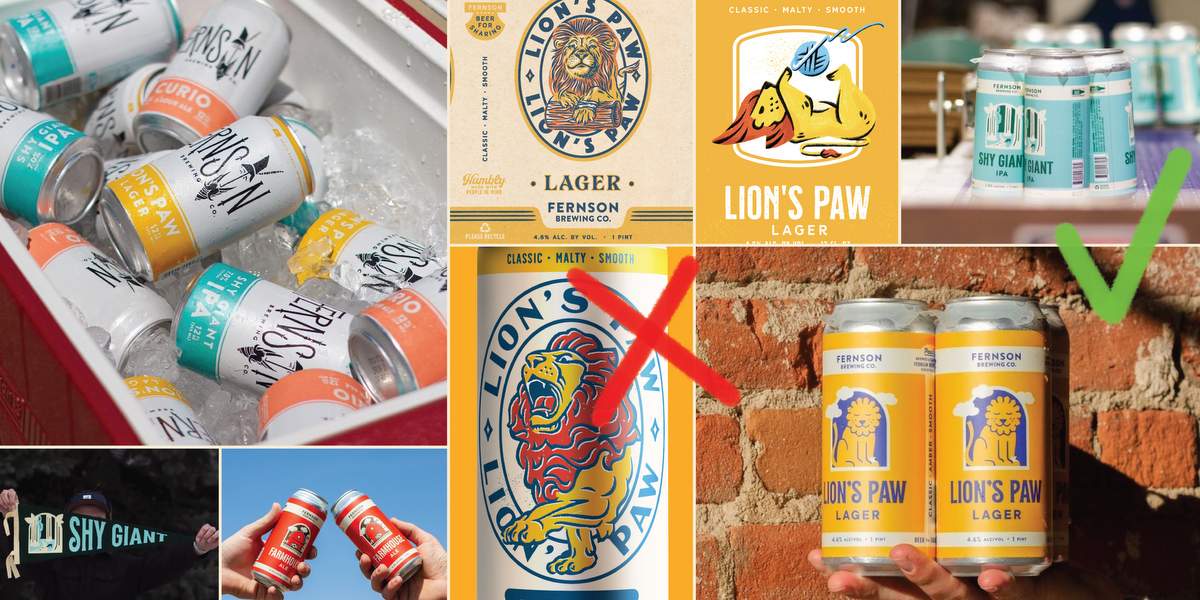
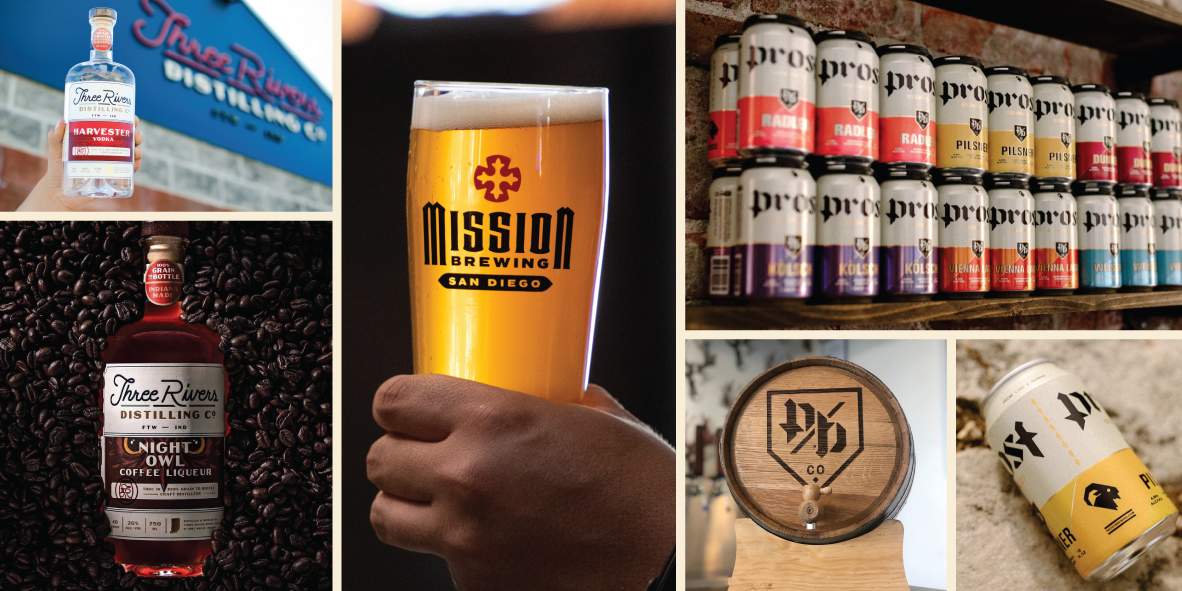
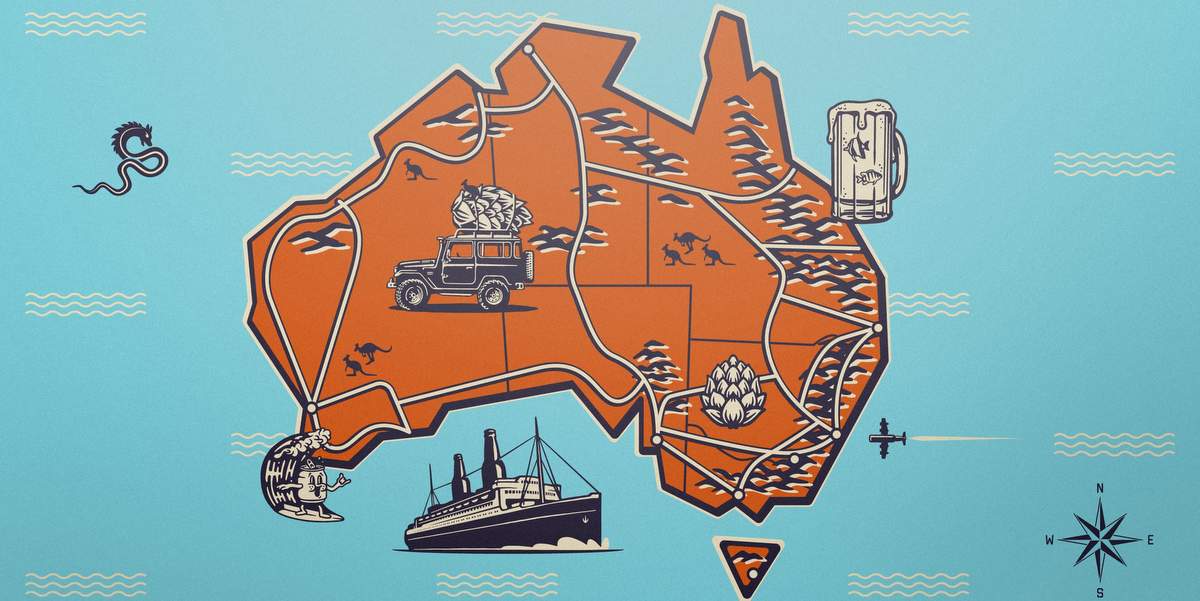
How NOT To Start ADamn Brewery says
Relatively irrelevant, also